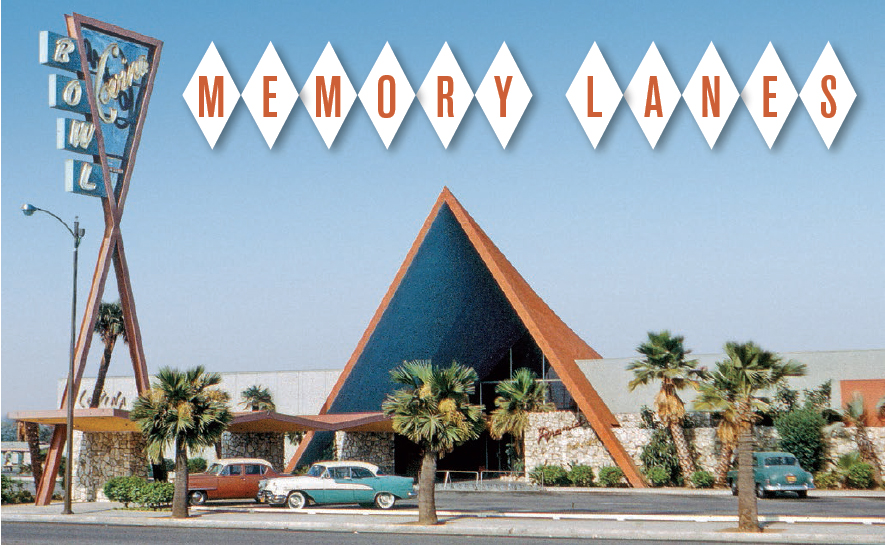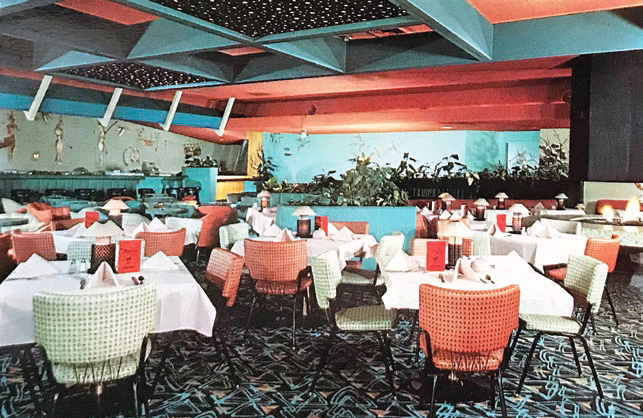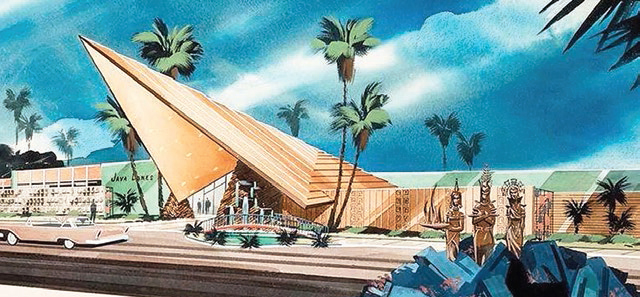Memory Lanes
 |
|
|
"Strrrike!"
It's the explosive crash of bowling balls and pins.
Now let imagination and memories take over, as we return to mid-century California to savor the excitement of that era's classic bowling alley experience.
Back then, bowling palaces were the heartbeat of many a town—gathering places where league players, families, and kids bowled and palled around, and couples sipped cocktails and danced the night away.
No longer was bowling relegated to dingy back alleys. Instead, 60-foot neon signs flashed along boulevards, and atomic starbursts glowed, inviting motorists to drop in, day and night. Gravity-defying modern rooflines invited bowlers into themed wonderlands that were much like a visit to Disneyland.
 |
|
|
Bowling truly had struck a chord—at least during the 1950s and '60s—as the kingpin of family entertainment.
"Some of the best times of my life were bowling with my family at Rocket Bowl [in Chatsworth] and Mission Hills Bowl [Mission Hills]," recalls Tommy Gelinas, who grew up in the San Fernando Valley.
"My mom worked at Rocket Bowl back in the day, so riding our bikes out to those bowling alleys was like venturing to another world. We were awed by the signs and the cool I-beams. It was all so futuristic!"
 |
|
|
Inside San Jose's Futurama Bowl, a fantastical Persian paradise awaited with its own Magic Carpet Room, a sumptuous cocktail lounge decorated with nearly 500,000 hanging beads. At Bel Mateo Bowl in San Mateo, an industrial-modern, steel totem pole encircled by fountain sprays welcomed bowlers to enjoy a new kind of suburban paradise embellished with Native American imagery.
Back at home, mid-century television viewers watched celebrities getting into the bowling spirit too, with movie star 'Jimmy' Stewart showing off his best bowling form on the air, and funnyman Don Adams of 'Get Smart' clowning for viewers.
"Everybody from Don Knotts to Fred Flintstone to Ralph Kramden were shown on the lanes—often in a very blue-collar way, often a comedic way," says architectural historian and author Chris Nichols, who's been working on a book that delves into the mid-century bowling phenomenon.
 |
|
|
Bowling actually got its start centuries ago, with the game's first establishment opening in New York's Bowling Green Park in 1733. In a move to refine and standardize the game, in 1875 the National Bowling Association was established. Fast forwarding to the 20th century, we see bowling continuously growing in popularity, but it would take a unique invention to transform it into what we know today.
Enter the automatic pinsetter.
Before World War II, many bowling alleys were rough-and-tumble back-alley dives. When pins got knocked down by bowlers, they were then picked up by hand and reset in position by local teenage 'pin boys.'
 |




